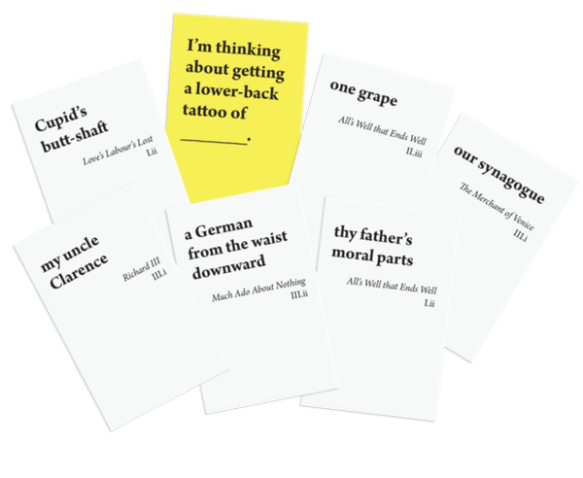As the world is being swept up by COVID-19 and people are being asked to quarantine themselves to avoid spreading the virus, I realized that this is a time where human contact is going to be kept to a minimum no matter where you are or how directly Coronavirus is currently affecting you. This is something that is particularly scary about this type of virus- it’s ability to spread quickly means that we have to isolate ourselves in order to keep things from escalating further.
As I start to plan my next few weeks where I will avoid public interaction, I realized that my belief that board games bring people together is only partly true. In reality, there will be board game groups and conventions that inevitably get shut down to increase safety, but those people already shut off from the outside world can use games as a way to entertain themselves during a difficult time. So in that line of thinking, I have decided to put out a list of board games that work well either solo or in small groups and would be good options for anybody who needs a way to entertain themselves during a time with less options than normal. I have divided the list up into single player game options as well as multiplayer for families who will be staying inside together (note, some of the single player games have multiplayer options as well). So, without further ado and in no particular order:
SINGLE PLAYER GAMES

Solitaire (1 player)- There are a lot of different types of solitaire, so as long as you have a deck of cards you have plenty of possibilities! A personal favorite of mine is Pyramid solitaire, where you set up the cards in a pyramid and try and match 2 cards together to equal 13.
 Scythe (1-5 players)- Scythe was included as part of the review in my last post, but I wanted to bring it up here as well because there is a one player option for the game. While I have not played the game as a 1 player game yet, but I have heard the solo experience is challenging but fun!
Scythe (1-5 players)- Scythe was included as part of the review in my last post, but I wanted to bring it up here as well because there is a one player option for the game. While I have not played the game as a 1 player game yet, but I have heard the solo experience is challenging but fun!
 Bananagrams (1-8 Players)- Bananagrams is a fast paced spelling game where you create a Scrabble-like board as you go. It’s a fun game for multiplayer but also can be entertaining solo, where you can test your speed in creating words with the tiles you draw.
Bananagrams (1-8 Players)- Bananagrams is a fast paced spelling game where you create a Scrabble-like board as you go. It’s a fun game for multiplayer but also can be entertaining solo, where you can test your speed in creating words with the tiles you draw.

Zombicide (1-6 players)- Zombicide was one of my favorite Board Game of the Week games, and it is one I play regularly to this day. Similar to Scythe, I have yet to try out the solo version of this game, but with its flexibility and ability to play as multiple characters, this is a good in-depth game that will be fun and take up a long stretch of your day.
 Dungeon Roll (1-4 players)- Dice rolling games are always a lot of fun for me, and Dungeon Roll is high on my list in that category. This fast-paced game is perfect for multiple playthroughs and would be a good addition to anybody’s game collection.
Dungeon Roll (1-4 players)- Dice rolling games are always a lot of fun for me, and Dungeon Roll is high on my list in that category. This fast-paced game is perfect for multiple playthroughs and would be a good addition to anybody’s game collection.
MULTIPLAYER GAMES
 Spot it! (2-8 players)- Spot it! is a great game for children and adults alike, and fits well into the family game mold. The game itself is very straightforward- the goal is to find a symbol on one card that matches with another card. The fun of the game is that each card is different, and there are multiple different types of gameplay options that keep it interesting through multiple playthroughs.
Spot it! (2-8 players)- Spot it! is a great game for children and adults alike, and fits well into the family game mold. The game itself is very straightforward- the goal is to find a symbol on one card that matches with another card. The fun of the game is that each card is different, and there are multiple different types of gameplay options that keep it interesting through multiple playthroughs.
 7 Wonders (2-7 players)/7 Wonders Duel (2 players)- I have reviewed 7 Wonders in the past, but I have not put up a review of 7 Wonders Duel. Nevertheless, both games are great options for playing with small groups- 7 Wonders fits well into the 3-4 player mold, whereas Duel is specifically created for 2 player games.
7 Wonders (2-7 players)/7 Wonders Duel (2 players)- I have reviewed 7 Wonders in the past, but I have not put up a review of 7 Wonders Duel. Nevertheless, both games are great options for playing with small groups- 7 Wonders fits well into the 3-4 player mold, whereas Duel is specifically created for 2 player games.
 Dixit (3-6 players)- Dixit is another game that works well with families, and is suited to a 3-4 player game. It’s artwork is beautiful and the gameplay is simple and easy to pick up, meaning that it can be played by all ages. There is technically a way to score and win, but a lot of times people will just play for fun or until they get bored.
Dixit (3-6 players)- Dixit is another game that works well with families, and is suited to a 3-4 player game. It’s artwork is beautiful and the gameplay is simple and easy to pick up, meaning that it can be played by all ages. There is technically a way to score and win, but a lot of times people will just play for fun or until they get bored.
 Stratego (2 players)- Another game dedicated to 2 players facing each other, Stratego is a strategy-heavy game that is great to play in any circumstance. I recommend it for people who like chess and want to try something similar, but with a different overall strategy.
Stratego (2 players)- Another game dedicated to 2 players facing each other, Stratego is a strategy-heavy game that is great to play in any circumstance. I recommend it for people who like chess and want to try something similar, but with a different overall strategy.
 Pandemic (2-4 players)- Part of me hesitated when choosing this game, based on the subject matter and how it directly correlates to why people aren’t able to be as social as they normally are. Nevertheless, this is the perfect game for groups of 2-4 and is a fun way to distract from the actual virus spreading. It might not be everyone’s cup of tea in this particular situation, but as I mentioned in my review of it a few years’ back, it is a great cooperative game that promotes working together in an industry that normally focuses on direct competition.
Pandemic (2-4 players)- Part of me hesitated when choosing this game, based on the subject matter and how it directly correlates to why people aren’t able to be as social as they normally are. Nevertheless, this is the perfect game for groups of 2-4 and is a fun way to distract from the actual virus spreading. It might not be everyone’s cup of tea in this particular situation, but as I mentioned in my review of it a few years’ back, it is a great cooperative game that promotes working together in an industry that normally focuses on direct competition.
Obviously this list of games is nowhere near a full list- in reality, all of you can just as easily take out your own personal favorite and play that as often as you’d like. But sometimes it’s nice to be reminded of the different types of games out there and how they can be a distraction during tough times. I hope that all of you are staying healthy and safe, and are able to enjoy this time of “social distancing” as best you can.


 Playing cards is the majority of the turn, and there are a number of different cards with varying immediate and long term effects. The most crucial cards are Bang! cards, which allow you to shoot anybody within range. Once you declare who you shoot, that player has the opportunity to play a Missed card, which lets them avoid taking damage. If a Missed card isn’t played, that player loses one hit point. Lose all of your hit points, and you are out of the game. The game ends when either the Sheriff is killed, or all Outlaws and Renegades are killed.
Playing cards is the majority of the turn, and there are a number of different cards with varying immediate and long term effects. The most crucial cards are Bang! cards, which allow you to shoot anybody within range. Once you declare who you shoot, that player has the opportunity to play a Missed card, which lets them avoid taking damage. If a Missed card isn’t played, that player loses one hit point. Lose all of your hit points, and you are out of the game. The game ends when either the Sheriff is killed, or all Outlaws and Renegades are killed. The strategy involved with this game took some getting used to, but once you get the hang of things it becomes fun and engaging. Knowing who the Sheriff is gives him/her a disadvantage, but the Sheriff also gets an additional hit point, gets to go first, and in certain instances has deputies to help. In addition, the Renegade only wins if the outlaws are killed before the Sheriff, so the player who is the Renegade has to work to harm the Sheriff without them dying and take out the rest of the characters first. The outlaws seem to have the easiest job, but with a number of other characters having different motivations sometimes tipping your hat too early and going straight for the Sheriff can make things difficult for you. Overall it feels like you are able to win as any of the characters (in our first round the Sheriff won and then in round two the Outlaws won), so there’s a good sense of balance that some competitive games lack. Another fun aspect of the game is the shooting distance- shooting distance is based on who you are sitting next to, meaning it is easier to shoot someone next to you than someone with multiple people in between. There are weapons and abilities to enhance your ability to shoot, but there are certainly times when you are restricted in your ability to use Bang! cards on people.
The strategy involved with this game took some getting used to, but once you get the hang of things it becomes fun and engaging. Knowing who the Sheriff is gives him/her a disadvantage, but the Sheriff also gets an additional hit point, gets to go first, and in certain instances has deputies to help. In addition, the Renegade only wins if the outlaws are killed before the Sheriff, so the player who is the Renegade has to work to harm the Sheriff without them dying and take out the rest of the characters first. The outlaws seem to have the easiest job, but with a number of other characters having different motivations sometimes tipping your hat too early and going straight for the Sheriff can make things difficult for you. Overall it feels like you are able to win as any of the characters (in our first round the Sheriff won and then in round two the Outlaws won), so there’s a good sense of balance that some competitive games lack. Another fun aspect of the game is the shooting distance- shooting distance is based on who you are sitting next to, meaning it is easier to shoot someone next to you than someone with multiple people in between. There are weapons and abilities to enhance your ability to shoot, but there are certainly times when you are restricted in your ability to use Bang! cards on people.

 are a huge number of possibilities and directions you can take when playing a card. At first when I read my cards I assumed there was no way I would be able to use some of them, but sure enough a round came along where they were the perfect fit. In addition, the fact that the judge gets to play one of the cards is a huge positive in comparison to CAH and Apples to Apples. The judge actually gets to shape the story the way they see fit, which can very quickly add to the hilarity.
are a huge number of possibilities and directions you can take when playing a card. At first when I read my cards I assumed there was no way I would be able to use some of them, but sure enough a round came along where they were the perfect fit. In addition, the fact that the judge gets to play one of the cards is a huge positive in comparison to CAH and Apples to Apples. The judge actually gets to shape the story the way they see fit, which can very quickly add to the hilarity.











 or the first time and feeling like everybody knows what to do, and even better it doesn’t feel like the same game you’ve always played because of the new cards and style. I also appreciate that the game is a bit more highbrow in its profanity- in no way does the game avoid dirty jokes, but it does find a way to make them more intellectual. Finally, the game is a great for social events and can be played with any number of players.
or the first time and feeling like everybody knows what to do, and even better it doesn’t feel like the same game you’ve always played because of the new cards and style. I also appreciate that the game is a bit more highbrow in its profanity- in no way does the game avoid dirty jokes, but it does find a way to make them more intellectual. Finally, the game is a great for social events and can be played with any number of players.
























 ge publishing company may not seem like the most effective way to get to where you want to go, but taking the game to the masses and hoping the concept draws enough support is certainly becoming more common. There have been over 9,000 board games that were created and published through a Kickstarter campaign, including significantly popular games such as
ge publishing company may not seem like the most effective way to get to where you want to go, but taking the game to the masses and hoping the concept draws enough support is certainly becoming more common. There have been over 9,000 board games that were created and published through a Kickstarter campaign, including significantly popular games such as 







